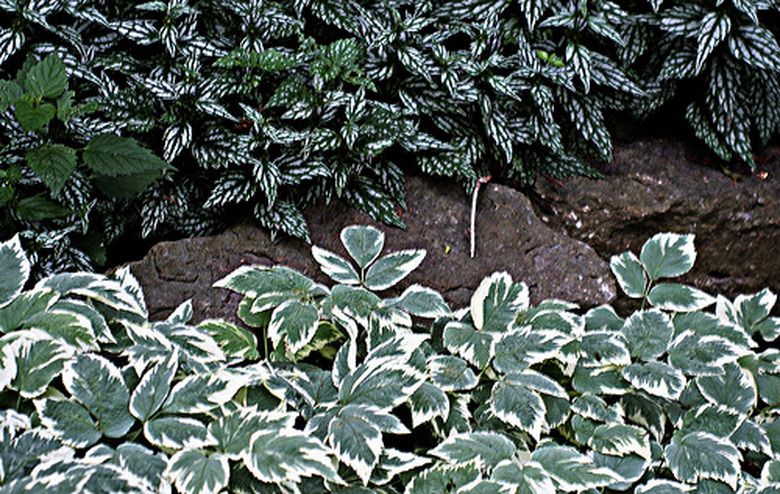How To Grow Bishop's Weed
Bishop's weed, otherwise known as Aegopodium, is a green or green and white variegated plant used as ground cover. It grows well in zones 4 through 8. It spreads quickly and easily by underground stolons (roots), and can become quite aggressive. It is propagated by division and seeds. Bishop's weed can thrive in some of the worst soils, and can tolerate full sunlight if it's kept moist. It grows 12 to 12 1/2 inches tall and produces small white flowers in May and June. Grow bishop's weed in an area by itself because it is invasive.
- Bishop's weed, otherwise known as Aegopodium, is a green or green and white variegated plant used as ground cover.
- It spreads quickly and easily by underground stolons (roots), and can become quite aggressive.
Step 1
Find an area where it's okay if the bishop's weed spreads. If you're concerned about spreading, locate an area that has natural barriers, such as a row of rocks or pavement, which can contain the spread.
Step 2
Plant bishop's weed in the spring or fall. Make shallow holes, about 2 inches deep and 6 to 8 inches apart. Plant the bishop's weed, spreading out the roots as you go.
Step 3
Water the plants thoroughly. Keep the soil moist and don't let it dry out. Bishop's weed prefers well-drained and evenly-moist soil.
- Find an area where it's okay if the bishop's weed spreads.
- Plant bishop's weed in the spring or fall.
Step 4
Cut the plants back and water them well if they become brown (likely in full or partial sun). A new set of leaves will grow within a month.
Care For Bishop's Weed
Plant the bishop's weed plants 1 foot apart in average soil with good drainage; blend a few inches of organic matter, such as compost, manure or leaf mold, with the native soil to improve drainage and fertility if you have poor soil. Select a site with full sun to partial shade; plants tend to do best with full, filtered sunlight or with some protection from the afternoon sun. Water the plants about once weekly to provide dry to medium moisture for the plants. Expect to water more frequently during the hot, dry summer months than in spring or fall. Remove flower heads as they expire to prevent the plants from setting and dispersing seeds. Cut back and pull up some of the Bishop's weed by the roots if it spreads to unwanted areas of the yard.
- Cut the plants back and water them well if they become brown (likely in full or partial sun).
Warning
If you share your plants, let the recipient know that bishop's weed can become invasive and difficult to remove once it's established.
Tip
Bishop's weed grows best in shady areas and under trees and bushes.
References
- Missouri Botanical Garden: Aegopodium Podagraria "Variegatum"
- Sunset: Aegopodium Podograria "Variegatum"
- University of Wisconsin-Green Bay Cofrin Center for Biodiversity: Aegopodium Podagraria
- Ohio State University Extension: Aegopodium Podagraria "Variegatum"
- U.S. Forest Service: Aegopodium Podagraria
